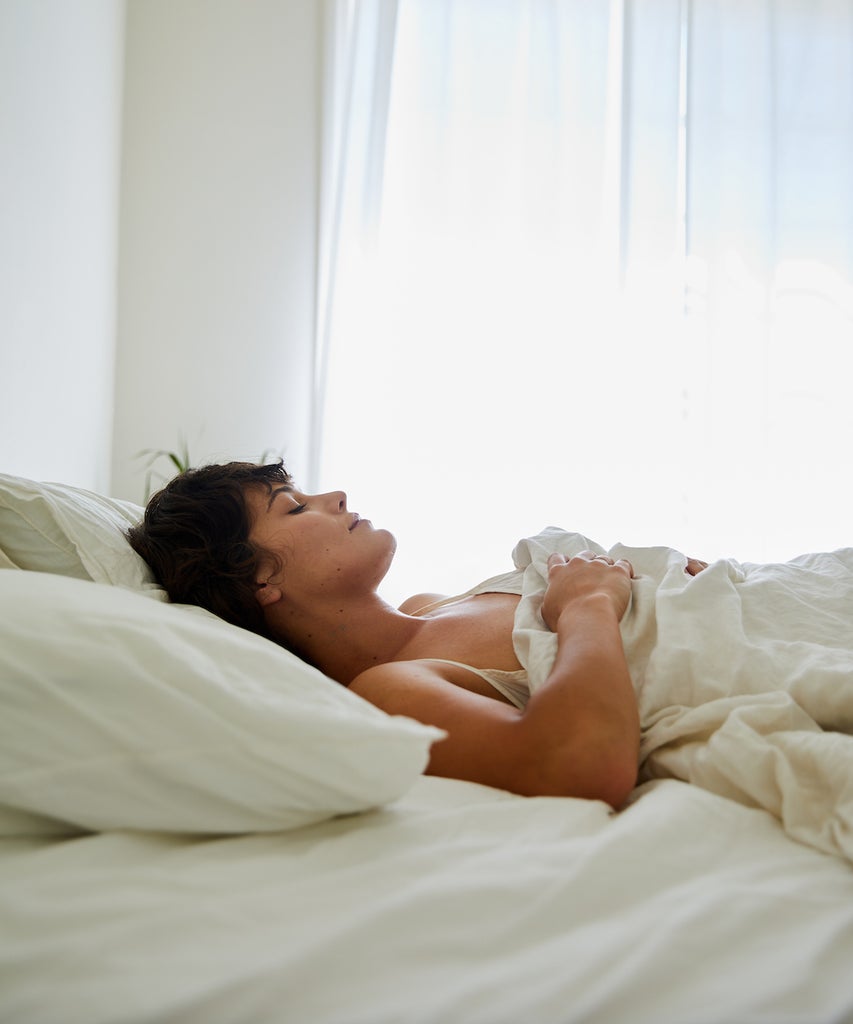
I don’t remember where, but I once heard something that’s stuck with me ever since — one day we’ll look at poor sleep hygiene with the same concern that we do around smoking cigarettes today.
We spend about a third of our lives asleep. The rest of the time, many of us work hard to optimise our lives, from perfecting — our skincare routines to productivity habits. Why not apply the same logic to our sleep practice?
There are a few solid snooze rules that are handed out to everyone like, we all need a minimum of eight hours of unconscious time, and technology isn’t great for the bedroom.
We’re all unique blobs of human life form, though. And our respective sleep styles need to be treated as such. We all have different sleep positions and habits, and that’s not something that needs to be curtailed, but instead, embraced.
What is a chronotype?
Chronotype, meaning ‘sleep type,’ is the natural circadian rhythm or body clock of a person. Essentially, it dictates when you feel inclined to sleep or when you feel alert and productive.
While we informally dish out loose labels like ‘early birds’ and ‘night owls,’ these bestial names might be onto something. Sleep experts (one of which was Olivia Arezzolo) decided to expand this animal vocabulary to be more inclusive of the various sleep styles out there.
The current model of chronotypes consists of four variations: lion, bear, wolf and dolphin.
Lion
The early lion gets the worm. If you enjoy waking before the sun rises and feel most productive between 7am and 12pm, you could be part of the 15% of the population who fall into the Lion chronotype.
Catch Lions exercising in the morning but fizzling out of energy at around 3pm. A 20-30 minute nap or meditation early afternoon can help boost some energy levels before heading to bed around 9-10pm.
Bear
The typical Western world work schedule is formed around the Bear chronotype, whose best hours of productivity are between 10am and 4pm. More than half of the population (55%) resonate with the Bear, predominately because it follows the solar cycle, meaning that Bears rise when the sun does and lose energy as it sets.
Productivity peaks before 1pm, so for those who experience the after-lunch slump, this could explain why. Scheduling in meetings and deadlines earlier in the day can help optimise your workday.
Wolf
The Wolf chronotype is the modern-day equivalent of a night owl. For about 15% of the population, energy levels are at their best between 2-8pm, around the afternoon and evening.
Unlucky for any 9-to-5ers, Wolves feel most fatigued between 7am and 1pm. To work with this chronotype instead of against it, Wolves should look to night-shift work.
Dolphin
For people who can be categorised into Dolphin chronotype, they feel most productive in the late evening after 10pm. The chronic night owls struggle with fatigue throughout the day, as well as sleep issues in general. Around 10% of the population identifies with this chronotype.
Of course, these aren’t prescriptive sleep cycles. There are also hybrid chronotypes and factors like temperature and the seasons that affect energy levels.
But it’s worth figuring out your chronotype to help you understand your sleep cycle better. Embrace your inner animal and the ZZZs will follow.
Like what you see? How about some more R29 goodness, right here?
My 3 Months Of Sleep With An EMF-Blocking Stone